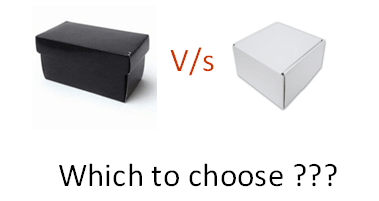application Testing Including Black Box Code Reviews and Reverse Engineering
Black Box Testing
Black Box Testing is a software testing method in which the functionalities of software applications are tested without having knowledge of internal lawmaking structure, implementation details and internal paths. Black Box Testing mainly focuses on input and output of software applications and it is entirely based on software requirements and specifications. It is also known as Behavioral Testing.

The higher up Black-Box tin be any software organization you want to test. For Case, an operating system similar Windows, a website like Google, a database like Oracle or even your own custom application. Under Black Box Testing, you can test these applications past just focusing on the inputs and outputs without knowing their internal lawmaking implementation. Consider the post-obit video tutorial-
Click here if the video is not accessible
How to do BlackBox Testing
Here are the generic steps followed to conduct out whatever blazon of Blackness Box Testing.
- Initially, the requirements and specifications of the system are examined.
- Tester chooses valid inputs (positive examination scenario) to check whether SUT processes them correctly. Besides, some invalid inputs (negative examination scenario) are called to verify that the SUT is able to observe them.
- Tester determines expected outputs for all those inputs.
- Software tester constructs exam cases with the selected inputs.
- The test cases are executed.
- Software tester compares the actual outputs with the expected outputs.
- Defects if any are fixed and re-tested.
Types of Black Box Testing
There are many types of Blackness Box Testing simply the following are the prominent ones –
- Functional testing – This black box testing type is related to the functional requirements of a organisation; it is done by software testers.
- Non-functional testing – This blazon of black box testing is not related to testing of specific functionality, only non-functional requirements such equally performance, scalability, usability.
- Regression testing – Regression Testing is done subsequently lawmaking fixes, upgrades or any other system maintenance to check the new code has not affected the existing code.
Tools used for Black Box Testing:
Tools used for Black box testing largely depends on the type of blackness box testing yous are doing.
- For Functional/ Regression Tests you can use – QTP, Selenium
- For Non-Functional Tests, you lot can utilize – LoadRunner, Jmeter
Black Box Testing Techniques
Following are the prominent Test Strategy amid the many used in Black box Testing
- Equivalence Form Testing: Information technology is used to minimize the number of possible test cases to an optimum level while maintains reasonable test coverage.
- Boundary Value Testing: Boundary value testing is focused on the values at boundaries. This technique determines whether a certain range of values are acceptable by the arrangement or not. It is very useful in reducing the number of test cases. It is about suitable for the systems where an input is within sure ranges.
- Decision Table Testing: A decision table puts causes and their effects in a matrix. There is a unique combination in each column.
Comparison of Black Box and White Box Testing:

| Blackness Box Testing | White Box Testing |
|---|---|
| the main focus of black box testing is on the validation of your functional requirements. | White Box Testing (Unit Testing) validates internal structure and working of your software code |
| Black box testing gives brainchild from code and focuses on testing try on the software arrangement behavior. | To conduct White Box Testing, knowledge of underlying programming linguistic communication is essential. Current day software systems use a variety of programming languages and technologies and its not possible to know all of them. |
| Black box testing facilitates testing advice amid modules | White box testing does non facilitate testing communication amongst modules |
Blackness Box Testing and Software Development Life Cycle (SDLC)
Black box testing has its own life cycle called Software Testing Life Bicycle (STLC) and information technology is relative to every stage of Software Development Life Cycle of Software Engineering science.
- Requirement – This is the initial phase of SDLC and in this stage, a requirement is gathered. Software testers as well take part in this stage.
- Test Planning & Assay – Testing Types applicable to the project are determined. A Test Plan is created which determines possible project risks and their mitigation.
- Blueprint – In this stage Test cases/scripts are created on the footing of software requirement documents
- Test Execution– In this stage Examination Cases prepared are executed. Bugs if whatever are fixed and re-tested.
Source: https://www.guru99.com/black-box-testing.html
0 Response to "application Testing Including Black Box Code Reviews and Reverse Engineering"
Publicar un comentario